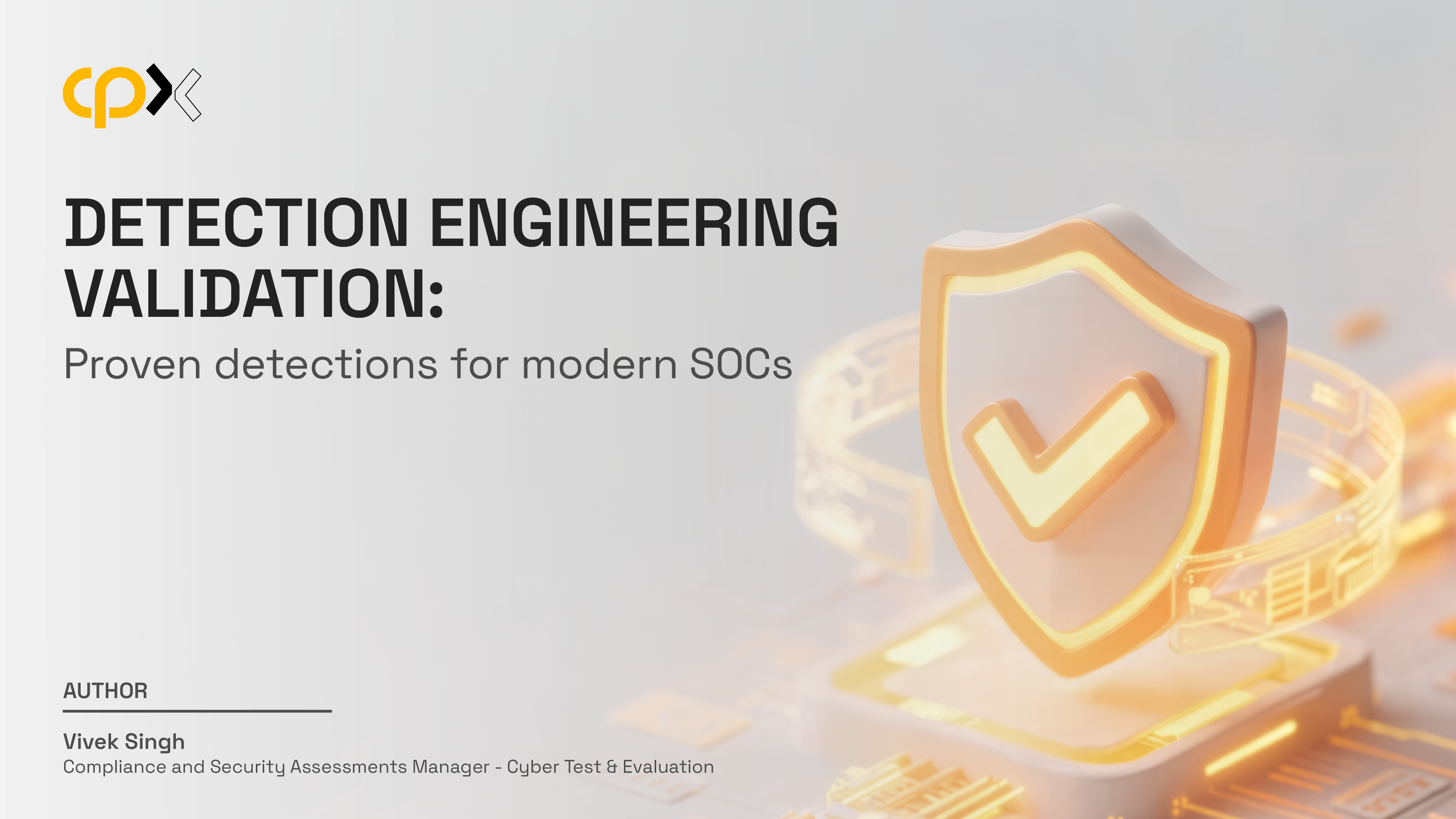18 August, 2025

Your Security Operation Center (SOC) has rules. Your SIEM shows activity. Your dashboards glow green.
Yet, when a real attack unfolds, it is not the stack that gets tested. It is whether your detection content holds the line. Most of it does not.
As someone who has sat on both sides of incident response and red team simulations, I can tell you:
Detection Engineering Validation is not about perfection. It is about knowing what works in your environment — under pressure, under evasion, and without assumptions.
I have worked with teams across critical infrastructure, financial services, and healthcare. The pattern repeats: detection rules get written, but they are rarely validated. Logic exists on paper — not in practice.
The most common failures I see?
And when an attacker abuses native tools, masquerades as a legitimate user, or pivots using unnamed binaries? Those untested detections fail silently.
Worse still, quantity gets mistaken for quality. Having 500 rules does not mean you are covered. I have seen organizations with fewer than 30 battle-tested rules outperform teams with thousands.
Detection validation is not theoretical work. It is technical, operational, and blunt.
When I validate detection pipelines, I use full-chain adversary emulation — not isolated payloads. That means chaining credential dumping (T1003.001), remote execution (T1021), and lateral movement (T1550/T1086) in the same scenario. That’s how real attackers move.
I work with what the team has — Splunk, Sentinel, Sysmon, Defender, or CrowdStrike. If the telemetry is misaligned, I highlight it. If detections are brittle, I break them. If something fires but does not tell a story, I push for enrichment.
The key metric is not just “Did it alert?” It is:
One of the more tactical wins came with a national grid operator. The red team bypassed EDR with a custom credential dumper that used native Windows APIs to scrape lsass.exe. No strings. No signatures. No alerts.
We turned on deep telemetry — Sysmon 10, process ancestry, and SeDebugPrivilege tracking via Event ID 4673. Wrote detection logic for unsigned processes touching lsass, especially with rare parent-child chains.
Validated it with NanoDump, custom binaries, and multiple memory scraping variants. Tuned out false positives from backup agents and config management tools.
When the red team re-ran the scenario, the alert triggered in under 60 seconds. The SOC isolated the host within 3 minutes. That is the kind of control validation enables.
There is no universal toolset for detection engineering because validation isn’t about brand names, it’s about clarity, precision, and pressure.
That said, I often lean on the following tools and practices when validating real-world scenarios:
I look for whether the signal can survive noise, whether the context reaches the SOC analyst in time, and whether detections hold up when the attacker breaks the expected flow.
The methods evolve. But the mission stays the same: validate through pressure, not paperwork.
If you have not validated your detections, you are running on hope. That is not strategy. That is a liability.
Whether you do it internally or bring someone in, make validation a core discipline. Not a checkbox.
Because when the real attack comes, assumptions will not save you. Engineering will.
If this resonates, get in touch at ContactUs@cpx.net. I am always up for a technical chat or helping your team take detection from theory to trust.